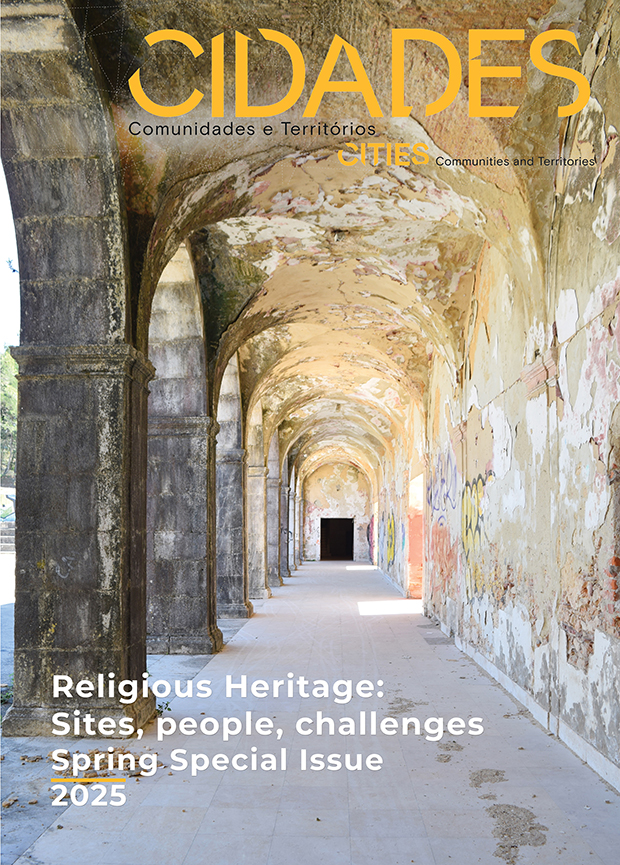A school for the Lord’s service
Norwich Cathedral and the recovery of a Benedictine heritage
Keywords:
Norwich Cathedral, Benedictine, Anglican, CathedralsAbstract
In the mediaeval Church in England, half of the diocesan cathedrals were also monastic communities; this phenomenon was virtually unique in the Church worldwide. Even after the Reformation, the monastic character of cathedrals continued to have a profound influence on the liturgy of the Church of England and on cathedrals as places to maintain the daily worship of God in solemn and musical form; to be homes for libraries and scholarship, and to be places of retreat and contemplative prayer. Norwich Cathedral was the last of these monastic cathedrals to be established (1096) and the first of the monastic cathedrals to be dissolved (1538). Particularly since the mid-nineteenth century, it has self-consciously been recovering a Benedictine character to its mission and ministry, most recently in the reconstruction of three monastic buildings lost since the Reformation: the Library reading room, the Refectory, and the Hostry. These buildings, while modern in design, build upon the remaining monastic fabric and echo the proportions and materials of their monastic predecessors, exemplifying the monastic vows of stability, obedience, and conversion of life. The Cathedral’s Benedictine principles extend to its ethos as an employer and commercial enterprise.
References
Atherton, I., Fernie, E., Harper-Bill, C., & Smith, H. (eds.) (1996). Norwich Cathedral: Church, City & Diocese, 1096-1996. London: Hambledon Press.
Benedict (1952). The Rule of St Benedict in Latin and English edited and translated by Abbot Justin McCann Monk of Ampleforth. London: Burns Oates.
Clark, J. G. (2011). The Benedictines in the Middle Ages. Woodbridge: The Boydell Press.
Dollard, K., Marett-Crosby, A. & Wright, T. (2002). Doing Business with Benedict. The Rule of St Benedict and business management: a conversation. London: Continuum.
Fincham, K. & Tyacke, N. (2007). Altars Restored: The Changing Face of Anglican Religious Worship, 1547-c.1700. Oxford: Oxford University Press.
Goulburn, E. (1870). The Principles of the Cathedral System Vindicated, and Enforced upon Members of Cathedral Foundations. London: Rivingtons.
Hale, R. (1982). Canterbury and Rome: Sister Churches. London: Darton, Longman and Todd.
Henderson, N. (ed.) (1996). The Goulburn Norwich Diaries. Norwich: Canterbury Press.
Kleymann, B. & Malloch, H. (2010). The Rule of St Benedict and corporate management: employing the whole person. Journal of Global Responsibility, 1 (2), pp. 207-224.
Knowles, D. (1950). The Monastic Order in England. Cambridge: Cambridge University Press,
Lyon, H. (2022). Memory and the Dissolution of the Monasteries in Early Modern England. Cambridge: Cambridge University Press.
MacCulloch, D. (1996). Thomas Cranmer: A Life. New Haven and London: Yale University Press.
MacCulloch, D. (2009). A History of Christianity: The First Three Thousand Years. London: Penguin Books.
MacCulloch, D. (2016). All Things Made New: Writings on the Reformation. London: Allen Lane.
Mudge, B. T. (1978). Monastic Spirituality in Anglicanism. Review for Religious, 37, 505 et seq.
Orme, N. (2017). The History of England’s Cathedrals. Exeter: Impress Books.
Parry, G. (2006), The Arts of the Anglican Counter-Reformation: Glory, Laud, and Honour. Woodbridge: The Boydell Press.
Thornton, M. (1963). English Spirituality. London: SPCK.
Twenty-five Treasures of Norwich Cathedral (2015). Norwich: Norwich Cathedral.
Downloads
Published
Issue
Section
License
Copyright (c) 2025 Peter Doll

This work is licensed under a Creative Commons Attribution-NonCommercial-NoDerivatives 4.0 International License.
Cidades, Comunidades e Territórios by DINÂMIA'CET-IUL is licensed under a Creative Commons Atribuição-Uso Não-Comercial-Proibição de realização de Obras Derivadas 4.0 Unported License.Permissions beyond the scope of this license may be available at mailto:cidades.dinamiacet@iscte.pt.






